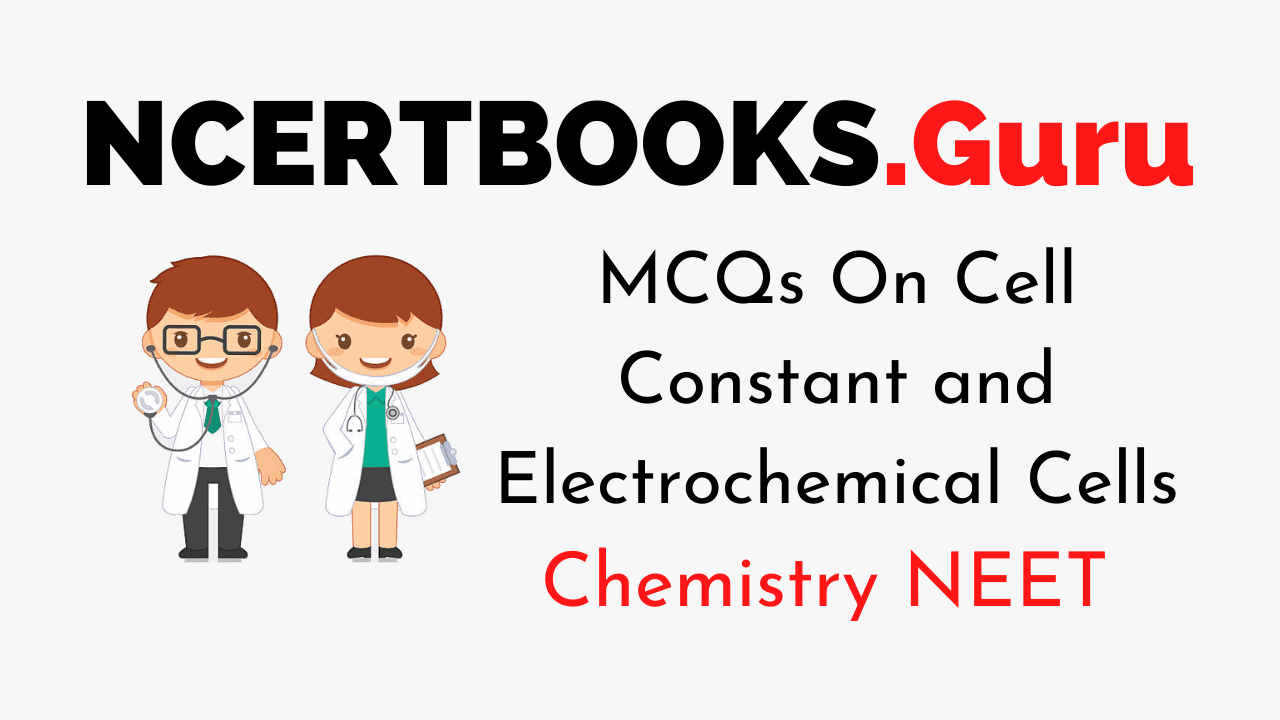NEET Chemistry is the scoring paper in the medical entrance examination. Here, you will discover the NEET Chemistry MCQ Questions for all Concepts as per the latest syllabus. Practice more on a regular basis with these NEET Chemistry objective questions on air pollution and improve your subject knowledge & problem-solving skills along with time management. NEET Chemistry Cell Constant and Electrochemical Cells Multiple Choice Questions make you feel confident in answering the question in the exam & increases your scores to high.
MCQs on Cell Constant and Electrochemical Cells
1. Oxygen has a +2 oxidation state in
(a) H2O
(b) H2O2
(c) F2O
(d) SO2
Answer
Answer: (c)
2. Which of the following is the strongest reducing agent?
(a) Li
(b) Na
(c) Mg
(d) Ca
Answer
Answer: (a)
3. When the salt bridge is removed from a cell, its voltage
(a) will increase
(b) will decrease to half
(c) will decrease to zero
(d) will not change
Answer
Answer: (c)
4. When a dilute solution of H2SO4 is electrolysed using a platinum electrode, at anode the gas evolved is
(a) SO3
(b) SO2
(c) H2
(d) O2
Answer
Answer: (d)
5. The oxidation number of sulphur in Caro’s acid is
(a) +4
(b) +5
(c) +6
(d) +8
Answer
Answer: (c)
6. Which of the following is the most powerful reducing agent?
(a) H2S
(b) H2SO3
(c) SnCl2
(d) HNO2
Answer
Answer: (a)
7. Which of the following substances can act as both oxidising and reducing agent?
(a) KMnO4
(b) K2Cr2O7
(c) HNO3
(d) H2O2
Answer
Answer: (d)
8. Electrolytes conduct electric current
(a) by the movement of ions
(b) by the movement of atoms
(c) by the movement of molecules
(d) by the movement of electrons from the cathode to anode
Answer
Answer: (d)
9. The reductant may be defined as a substance, whose oxidation no of the atom
(a) increases
(b) decreases
(c) remains constant
(d) may increases or decreases
Answer
Answer: (a)
10. Which of the following is not an example of an oxidizing agent?
(a) hydrogen peroxide
(b) potassium dichromate
(c) nitric acid
(d) hydrogen sulphide
Answer
Answer: (d)
11. The conductance in electrolyte conductors is due to
(a) Either movement of electrons or ions
(b) The flow of free mobile electrons
(c) Movement of ions
(d) None of the above
Answer
Answer: (c)
12. The cell constant of a conductivity cell
(a) Changes with a change of concentration of electrolyte
(b) Remains constant for a cell
(c) changes with a change of electrolyte
(d) changes with change in temperature
Answer
Answer: (b)
